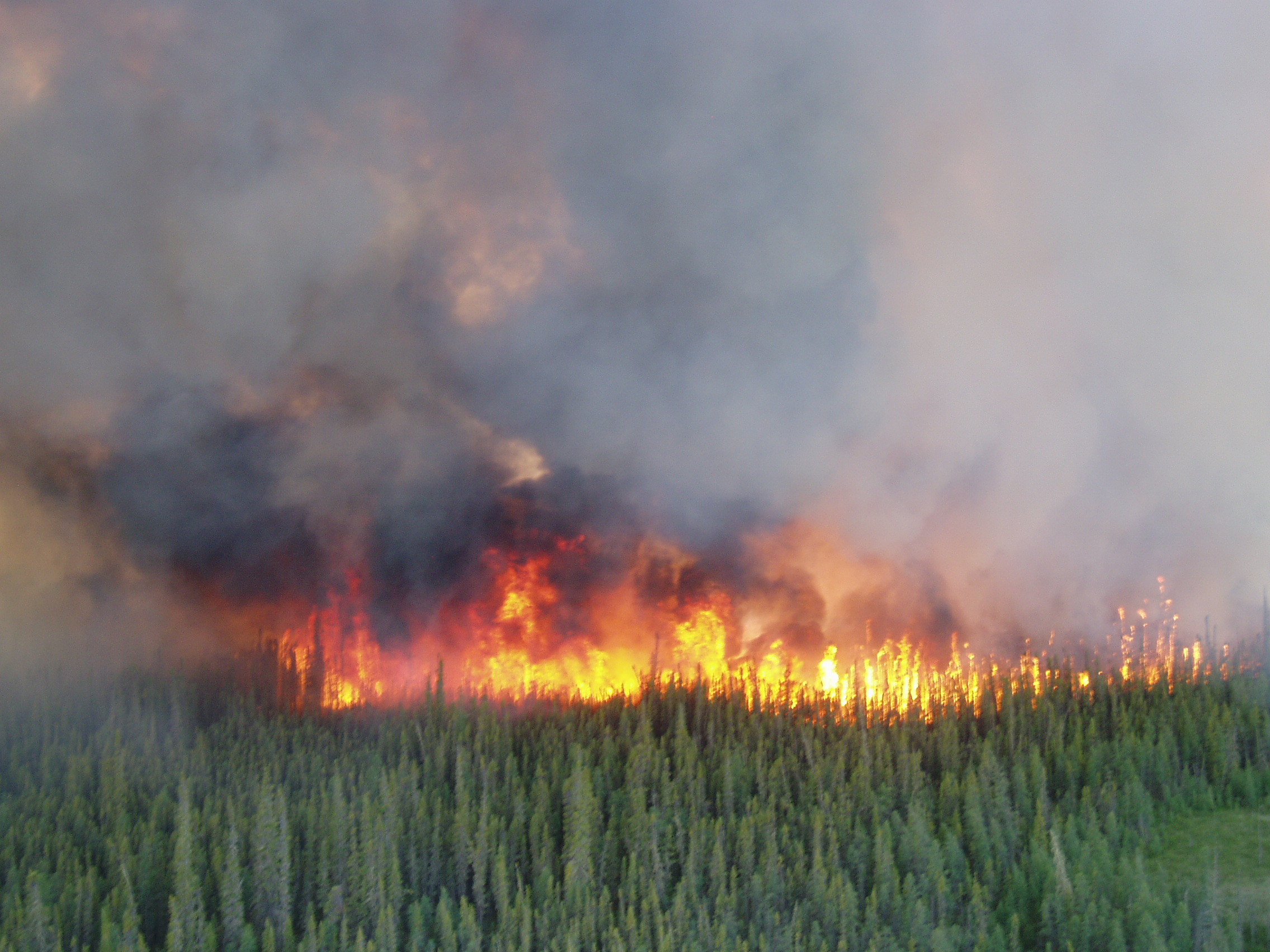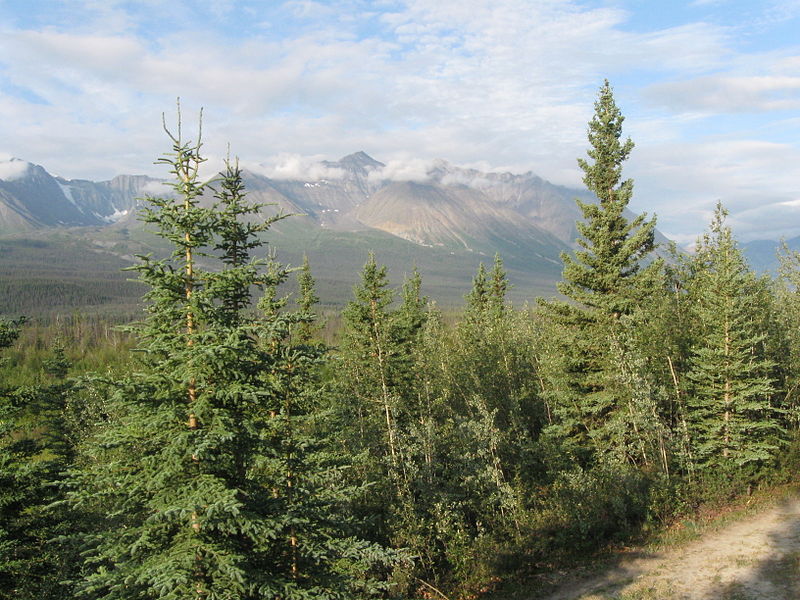White Spruce : Risks to White Spruce
Between 2008 and 2009, a study was conducted in Yukon, Canada to test the effects of climate change on 56 white spruce trees. They collected data from mature (older than 60 years old) trees, 45 in southern half of Yukon Territory and 11 in the northern half of Yukon Territory, reaching six out of the eight climatic zones of Yukon. Researchers analyzed the differences in regional growth patterns over the year from tree-ring data. They found that there were significant signs of changing growth patterns as a result from climate change. Drought was the primary limitation for the central and southern regions, while snowfall was most likely the cause for the northern regions. The moisture of the soil affects how any tree grows. The reduction of moisture in the soil is making it harder for the white spruce to grow in their natural environment.

This is a typical forest fire of white and black spruce in the North American Boreal Forest. (Fire Ecology.ca, 2007)
Another risk to the white spruce population is that they are extremely susceptible to forest fires and can easily be killed by them. Their bark is thin and the roots are shallow. Since most forest fires take place in the summer when the seeds are not fully mature, there are less seeds for dispersal in fall and winter. However, cones are not always killed off by a fire and can remain on the tree for one to two years after, which helps with dispersal. In forests that are not maintained, there is a chance that the white spruce can be eliminated if a fire was to occur. A fires frequency, intensity and severity are important factors in the distribution and growth as well. If multiple fires were to occur in short intervals (40-50 years), the source of white spruce could be eradicated from that area due to the high frequency. After a fire, the surviving trees will attempt to reestablish an area through wind-dispersal. After a few years, reproduction will be localized around surviving tree.

